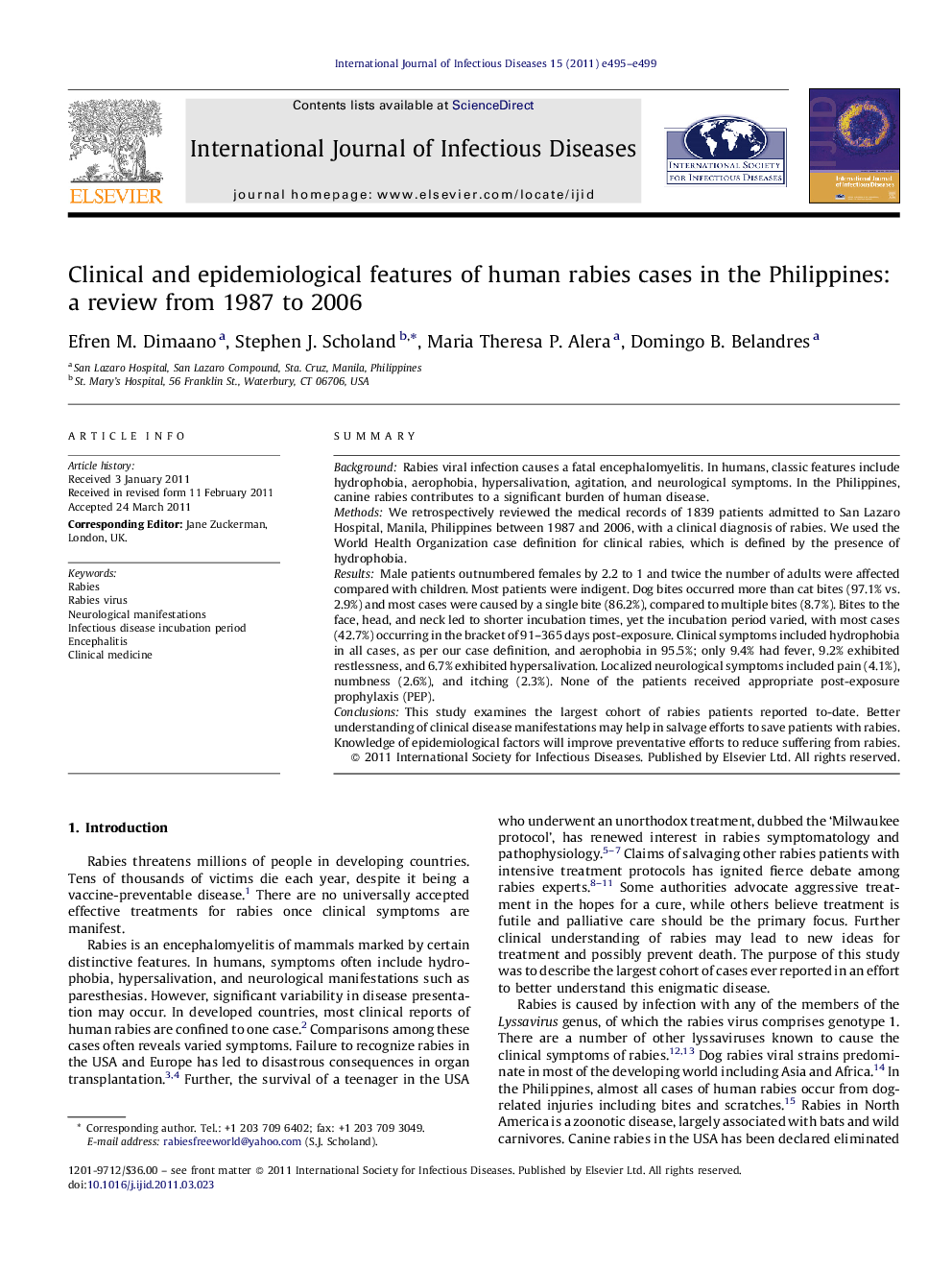| Article ID | Journal | Published Year | Pages | File Type |
|---|---|---|---|---|
| 3364118 | International Journal of Infectious Diseases | 2011 | 5 Pages |
SummaryBackgroundRabies viral infection causes a fatal encephalomyelitis. In humans, classic features include hydrophobia, aerophobia, hypersalivation, agitation, and neurological symptoms. In the Philippines, canine rabies contributes to a significant burden of human disease.MethodsWe retrospectively reviewed the medical records of 1839 patients admitted to San Lazaro Hospital, Manila, Philippines between 1987 and 2006, with a clinical diagnosis of rabies. We used the World Health Organization case definition for clinical rabies, which is defined by the presence of hydrophobia.ResultsMale patients outnumbered females by 2.2 to 1 and twice the number of adults were affected compared with children. Most patients were indigent. Dog bites occurred more than cat bites (97.1% vs. 2.9%) and most cases were caused by a single bite (86.2%), compared to multiple bites (8.7%). Bites to the face, head, and neck led to shorter incubation times, yet the incubation period varied, with most cases (42.7%) occurring in the bracket of 91–365 days post-exposure. Clinical symptoms included hydrophobia in all cases, as per our case definition, and aerophobia in 95.5%; only 9.4% had fever, 9.2% exhibited restlessness, and 6.7% exhibited hypersalivation. Localized neurological symptoms included pain (4.1%), numbness (2.6%), and itching (2.3%). None of the patients received appropriate post-exposure prophylaxis (PEP).ConclusionsThis study examines the largest cohort of rabies patients reported to-date. Better understanding of clinical disease manifestations may help in salvage efforts to save patients with rabies. Knowledge of epidemiological factors will improve preventative efforts to reduce suffering from rabies.
